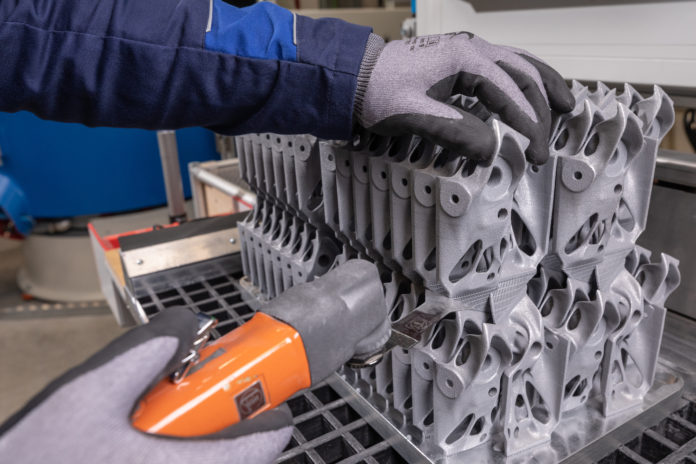Since it has opened its additive manufacturing campus, BMW Group has generated even more interest within the additive manufacturing industry. Not only is the car manufacturer involved in several projects to advance the full integration of AM, but it also collaborates with AM companies to maintain this leadership position in the industry. One of these companies is ELISE GmbH, a company that develops an open generative engineering platform that provides a strong base to operators that would like to leverage modeling and simulation tools.
So far, the use of the next-generation of manufacturing technologies helps “speed up development cycles and get vehicles to series maturity faster”. The current development of Rolls-Royce Motor Cars is a great example that illustrates this point. The car manufacturer has been 3D printed metal and polymer parts at various points in the process chain and different sites across the global production network.
The components concerned are for the vehicle body and passenger cell, and are highly functional and rigid. The process for manufacturing them was developed and prepared for application in automotive production by the BMW Group, at the company’s own Additive Manufacturing Campus, which also produces polymer parts by multi-jet fusion and selective laser sintering.
At BMW Group Plant Landshut metal parts are currently made by laser beam melting. In production, the metal 3D-printed components are fitted to car bodies in an almost entirely automated process. Polymer components from the Additive Manufacturing Campus and the metal substrate for the trim panel are fitted in the automobiles.
The addition of generative design & artificial intelligence to product development
Engineers as well as production and materials experts examined hundreds of components, focusing throughout on the economic benefits of the new technology, and on the weight and geometry advantages compared with conventionally manufactured parts. Components were selected for 3D printing based on a series of criteria and requirements, which were defined and translated into “machine language” with the help of data scientists. This marked the start of a new AI system enabling the BMW Group to identify faster and earlier on which components could potentially be produced by 3D printing.
Parts that had previously been virtually impossible to realise are engineered by generative design, which uses computer algorithms for rapid component development. Together, experts and computers create parts that make the best possible use of materials in production. Many potential applications are only possible at all thanks to generative design, and 3D printing technologies are particularly suitable for creating their complex forms and structures, which were previously impossible to produce with conventional tools.
For the BMW Group, generative design resulted in topology-optimised solutions, where form and function have been significantly enhanced. The components are around 50 percent lighter than comparable conventional components and make the best possible use of the space available, as is the case with the damper for the rear lid.
Remember, you can post free of charge job opportunities in the AM Industry on 3D ADEPT Media or look for a job via our job board. Make sure to follow us on our social networks and subscribe to our weekly newsletter : Facebook, Twitter, LinkedIn & Instagram ! If you want to be featured in the next issue of our digital magazine or if you hear a story that needs to be heard, make sure to send it to contact@3dadept.com






